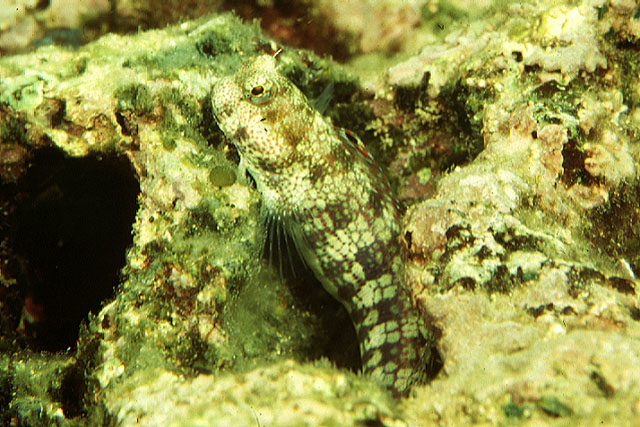| Blenniidae (Combtooth blennies), subfamily: Salariinae |
| 12 cm SL (male/unsexed); 9 cm SL (female) |
|
reef-associated; marine; depth range 0 - 4 m |
| Indo-Pacific: East Africa to the Hawaiian, Line and Ducie Islands, north to Marcus Island. |
|
Dorsal spines (total): 12-13; Dorsal soft rays (total): 18-20; Anal spines: 2-2; Anal soft rays: 20-21. Body with 6-7 irregular bands (Ref. 4404). Dark spot present distally on anterior part of dorsal fin; females with dark spots on vertical fins, males more evenly colored (Ref. 4404). |
| Inhabit shallow shore line water of intertidal reef flats from 0.5 to 1.5 m depth where the substrate consists of a thin carpet of algal turf and sand (Ref. 205). Benthic (Ref. 58302). Oviparous. Eggs are demersal and adhesive (Ref. 205), and are attached to the substrate via a filamentous, adhesive pad or pedestal (Ref. 94114). Larvae are planktonic, often found in shallow, coastal waters (Ref. 94114). |
|
Least Concern (LC); Date assessed: 24 March 2009 Ref. (130435)
|
| harmless |
Source and more info: www.fishbase.org. For personal, classroom, and other internal use only. Not for publication.

